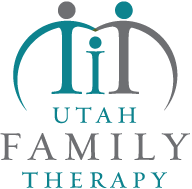Effective January 1, 2022, laws regulating client care have been updated to include the “No Surprises” act, which requires providers to give current and potential future clients a “Good Faith Estimate” (GFE) on the cost of treatment. Below you will find a summary of this requirement.
Effective January 1, 2022, a provider must furnish a self-pay patient with the notice and GFE prior to all scheduled services. This includes, but is not limited to, office visits, therapy, diagnostic tests, infusions, and surgeries.
What is the No Surprises Act?
The No Surprises Act (NSA) was enacted in December 2021 in accordance with broader COVID-19 legislation and went into effect January 1, 2022. The act aims to reduce the likelihood that patients may receive a “surprise” medical bill by requiring that providers inform patients of an expected charge for a service before the service is provided.
This act currently applies to healthcare providers (including therapists) who are serving clients who are paying either out of pocket or out of network with their insurance company. It is expected to expand in the coming months to include in-network clinicians as well. Meaning, all therapists will eventually have to comply with the new regulations.
Who qualifies as a self-pay patient?
A provider’s duty to provide notice and a GFE applies to self-pay patients, i.e., an individual who (1) does not have benefits for an item or service under a group health plan, group or individual health insurance coverage offered by a health insurance issuer, federal healthcare program, or a health benefits plan; or (2) chooses not to use his or her coverage benefit for the item or service.
In many ways, this regulation protects patients from discovering, after they receive care, that they owe a massive medical bill for un-covered services.
However, therapy is different in that we can’t necessarily provide an estimate of how long it takes to treat a relationship issue, anxiety, depression or and trauma.
There are to many variables that make it nearly impossible to determine what will be needed for treatment. And there is no way to give a “good faith estimate” on whether or not a client will want to return.

